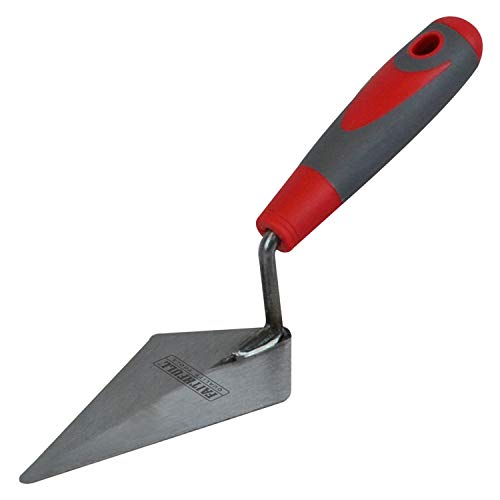What is a Pointing Trowel?
A pointing trowel is a small hand tool that is commonly used by masons and bricklayers to apply and shape mortar during the construction of walls, pavements, or other structures. It is a versatile tool that can be used for various tasks, such as filling gaps, smoothing surfaces, or even removing excess material.
Types of Pointing Trowels
There are several different types of pointing trowels available on the market, each designed for specific purposes and materials. The most common types include:
London Pointing Trowel
The London pointing trowel is the most popular type of pointing trowel. It has a triangular-shaped blade with a slightly rounded point, making it ideal for precision work and accessing tight spaces. It is commonly used for brickwork, stonework, and other masonry applications.
Philadelphia Pointing Trowel
The Philadelphia pointing trowel is similar to the London pointing trowel, but it has a rectangular-shaped blade with pointed edges. This design allows for a larger surface area, making it suitable for spreading mortar and leveling surfaces.
Gauging Pointing Trowel
A gauging pointing trowel has a narrow, flat blade with vertical sides. It is primarily used for mixing and applying smaller quantities of mortar or other materials, such as grout or plaster. It is commonly used for detailed work, such as repairing small cracks or filling in gaps.
Margin Trowel
A margin trowel is similar to a pointing trowel but has a rectangular-shaped blade with rounded corners. It is typically used for spreading and shaping small amounts of mortar or other materials in tight spaces, such as corners or edges.
How to Use a Pointing Trowel
Using a pointing trowel requires proper technique to ensure efficient and accurate work. Here are the basic steps on how to use a pointing trowel:
Prepare the Mortar
Start by preparing the mortar. Mix the appropriate amount of mortar and water according to the manufacturer’s instructions. The consistency of the mortar should be workable but not too watery or dry.
Load the Trowel
Load the trowel with mortar by scooping it up from the mixing container. Hold the trowel at a slight angle and use the blade to collect a sufficient amount of mortar.
Apply the Mortar
Position the trowel against the surface where the mortar is to be applied. Use a firm but controlled motion to spread the mortar evenly onto the surface. Depending on the type of job, you may need to apply mortar to joints, gaps, or other areas.
Shape and Smooth
Use the pointed tip or edges of the trowel to shape and smooth the mortar. Press the trowel against the mortar and move it in a back-and-forth or circular motion to achieve the desired finish.
Clean the Trowel
After completing the task, clean the trowel with water and a stiff brush to remove any excess mortar or debris. Properly cleaning and maintaining your trowel will help prolong its lifespan and ensure optimal performance.
Tips for Using a Pointing Trowel
To maximize the effectiveness of a pointing trowel, consider the following tips:
Choose the Right Trowel
Select the appropriate type and size of pointing trowel for your specific task. Consider the material you are working with and the area you need to access.
Practice Proper Technique
Master the correct hand positioning and motion to achieve smooth and consistent results. Practice on a small test area before tackling a larger project.
Use the Right Amount of Pressure
Apply even but controlled pressure when spreading the mortar. Avoid using excessive force, as it can lead to uneven application or damage to the surface.
Clean and Maintain
Regularly clean your pointing trowel after each use to prevent the buildup of hardened mortar. Store it in a dry place and consider sharpening the blade if it becomes dull.
A pointing trowel is an essential tool for masons and bricklayers, allowing them to apply and shape mortar with precision. By understanding the different types of pointing trowels and following proper techniques, you can achieve professional results in your construction or masonry projects.






